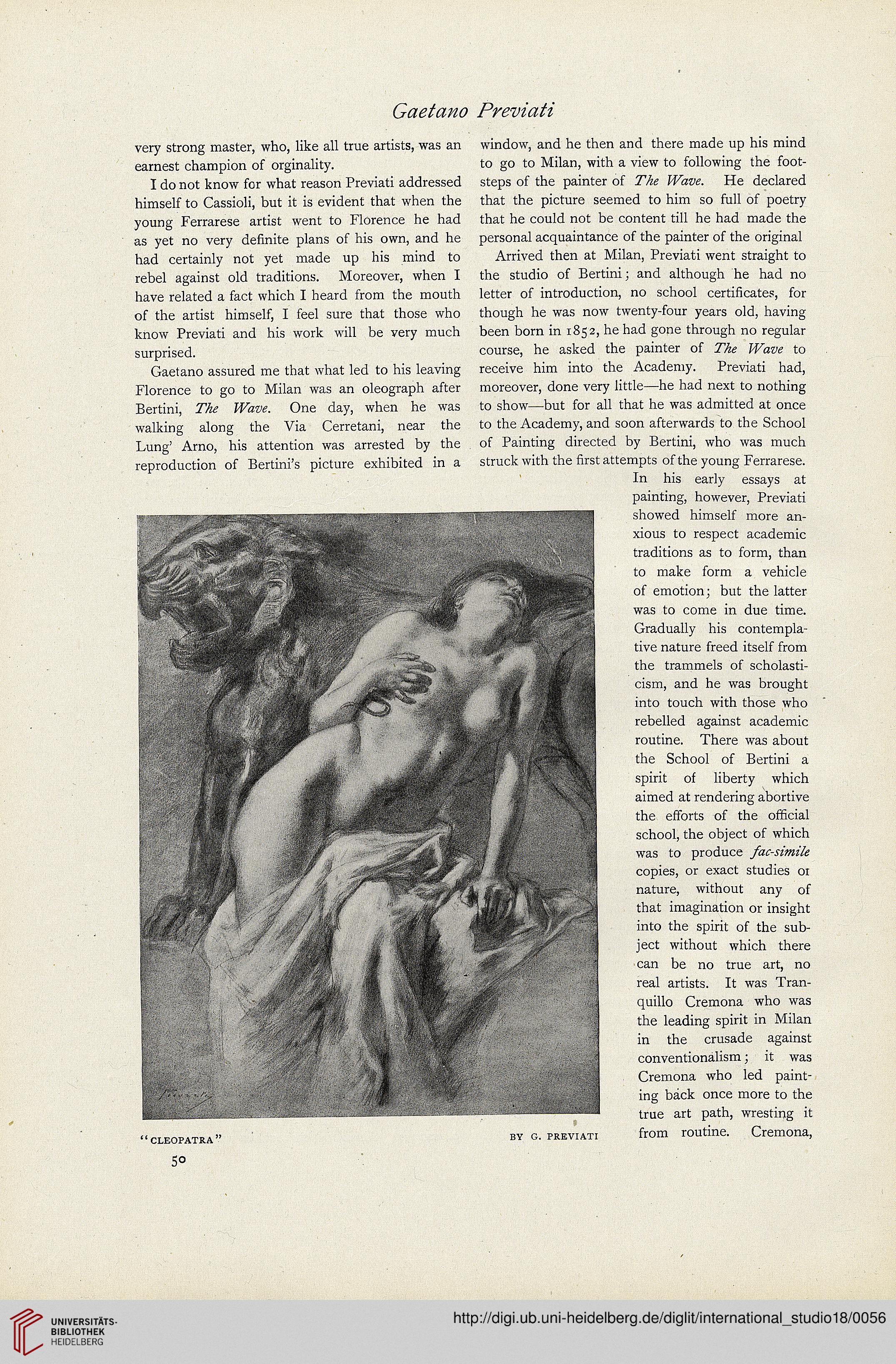very strong master, who, like all true artists, was an
earnest champion of orginality.
I do not know for what reason Previati addressed
himseif to Cassioh, but it is evident that when the
young Ferrarese artist went to Fiorence he had
as yet no very dehnite plans of his own, and he
had certainly not yet made up his mind to
rebel against old traditions. Moreover, when I
have related a fact which I heard from the mouth
of the artist himself, I feel sure that those who
know Previati and his work wiil be very much
surprised.
Gaetano assured me that what led to his leaving
Fiorence to go to Miian was an oieograph after
Bertini, One day, when he was
walking along the Via Cerretani, near the
Lung' Arno, his attention was arrested by the
reproduction of Bertini's picture exhibited in a
window, and he then and there made up his mind
to go to Milan, with a view to following the foot-
steps of the painter of yVf fFazv. He declared
that the picture seemed to him so fuil of poetry
that he could not be content till he had made the
personal acquaintance of the painter of the original
Arrived then at Milan, Previati went straight to
the studio of Bertini; and although he had no
letter of introduction, no school certificates, for
though he was now twenty-four years old, having
been born in 1852, he had gone through no regular
course, he asked the painter of fFaw to
receive him into the Academy. Previati had,
moreover, done very little—he had next to nothing
to show—but for all that he was admitted at once
to the Academy, and soon afterwards to the School
of Painting directed by Bertini, who was much
struck with the 6rst attempts of the young Ferrarese.
In his early essays at
painting, however, Previati
showed himself more an-
xious to respect academic
traditions as to form, than
to rnake form a vehicle
of emotion; but the iatter
was to come in due time.
Gradually his contempla-
tive nature freed itself from
the trammels of scholasti-
cism, and he was brought
into touch with those who
rebelled against academic
routine. There was about
the School of Bertini a
spirit of liberty which
aimed at rendering abortive
the efforts of the ofhcial
school, the object of which
was to produce yMr-y/wzH
copies, or exact studies or
nature, without any of
that imagination or insight
into the spirit of the sub-
ject without which there
can be no true art, no
real artists. It was Tran-
quillo Cremona who was
the leading spirit in Milan
in the crusade against
conventionalism; it was
Cremona who led paint-
ing back once more to the
true art path, wresting it
from routine. Cremona,




